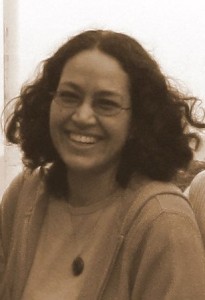I am a native Spanish speaker. My first exposure to other languages happened when I was in my mom’s belly. My family lived on an Island in the Caribbean where different languages were spoken.
At the age of six –and for about eight years, I attended English classes once a week at a bi-national institute in my Spanish speaking country.
What I remember of the English for kids courses is playing games like “hangman” and singing songs like “Old McDonald had a farm”. In the English for teens there were some drills and lab sessions in which we filled in the blanks in the lyrics of popular songs.
I don’t remember much about French in High school, except I didn’t like it one bit.
As an undergraduate student, I skipped so many classes in the English courses that I cannot summarize how the language was taught. But I did worked hard studying Latin, and I think this was the course that planted in me the interest in languages.
In order to register in the Latin course, we had to take a Spanish grammar test. We were required to know the parts of speech, verb moods and tenses, parts of the sentence and kind of complements. We had lots of memorization and translation to do in this course. Because Latin was not a language to be learned with the purpose of speaking, there was not listening material to deal with, and the classes consisted on some grammatical and syntactical explanations and the use of the declinations and vocabulary (that we had learned by rote memorization) in the textbook translation exercises. As French in high school, Latin was taught using Spanish as the language of instruction.
Learning Latin really helped me to understand English better, and to grow the interest in translation. After the Latin courses, I ended up in an informal group of translators that, for almost a year, held weekly meetings in which we studied translation theory and Spanish grammar. Each member had the additional commitment to translate academic texts from English or French into Spanish, and study another language. I chose German.
For the German lessons we worked with materials produced in Germany. The course pack consisted on a Textbook, a workbook and CDs with no words in other languages but German, and a glossary booklet for Spanish speakers. I loved this series, Themen neu, and I studied German for about four years with the same teacher. She later changed the textbook for another less dense, but I didn’t engage as well with the new one. Anyway, we hardly used the board, because all the explanations we needed were in the grammar section of the Themen neu textbook. We used the workbook a lot, but most of the oral exercises were just made up situations in which we included the grammar and vocabulary learned in class and during our preparation week. One of my classmates was a musician, and studying with him showed me a lot about learning styles. His pronunciation was great, he spoke German fluently, but his writing was not that good. He relied on his hearing, obviously, so when he had to write, he was outside his comfort zone. I learned about myself that I am a visual learner; I need to see the word in order to learn how it is spelled and how it sounds. I visualize the word and attach the sound to it.
Now I live in an English speaking country, and continue learning English in different ways. Especially, I learn a lot by observing how my children learn the language. It is like living a second childhood. I have learned the nursery rhymes English speakers grow with, and every bedtime story teaches me something new, like it does to my children. Studying spelling with my second grader is an adventure that we enriched by using American Sign Language finger spelling.


